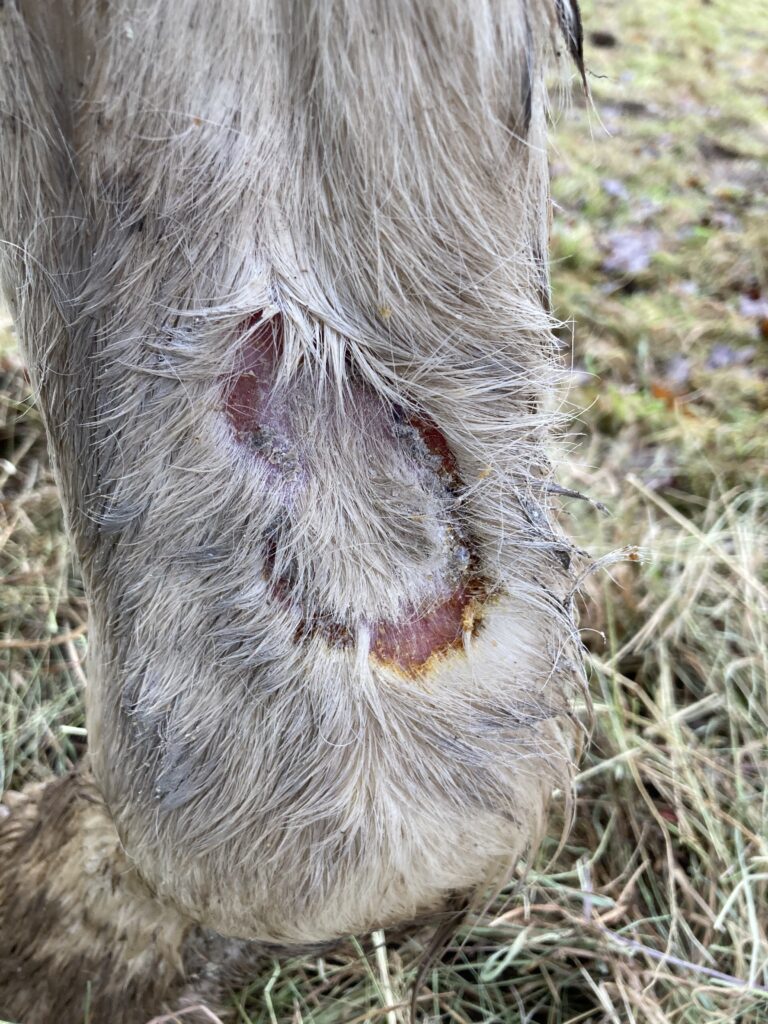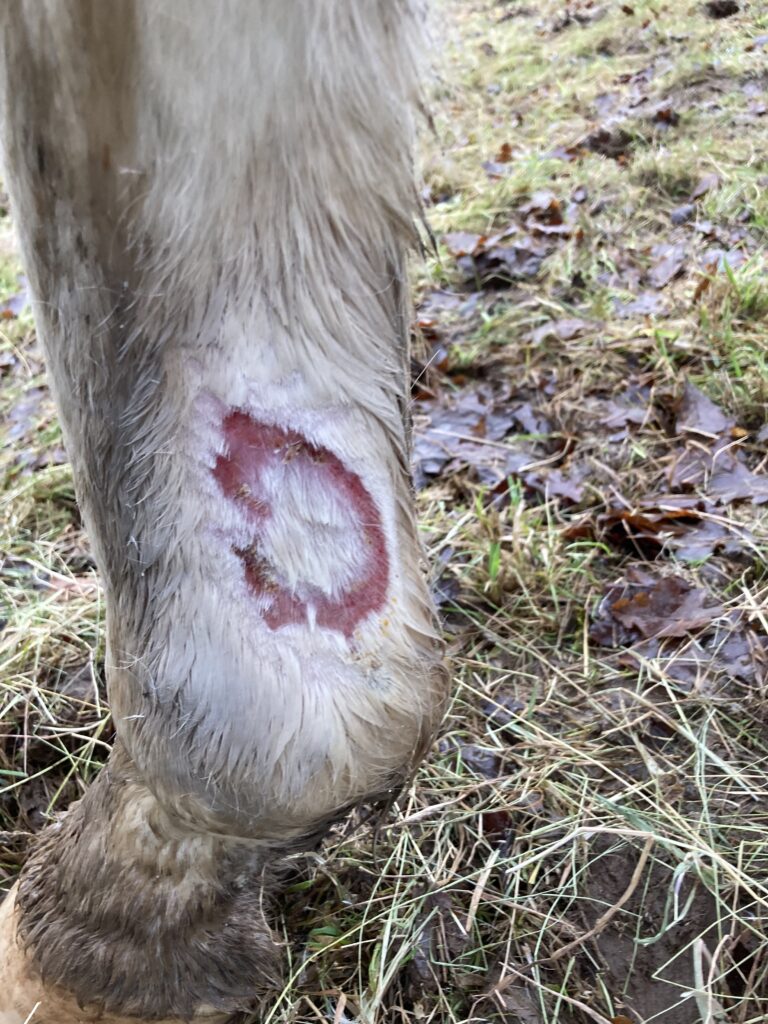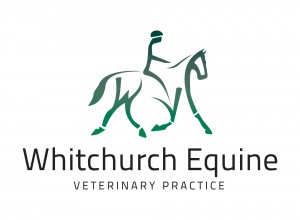…..an emerging skin condition.

With the decline in typical Mud fever dermatitis cases we are seeing a rise in Pastern leukocytoclastic vasculitis dermatitis.
Basically NOT all scabs on the lower limbs are the same…
The photo shows a typical case which is often circular with a spreading border.
There are several simple differences to note between these two conditions;
- Mud fever is a surface problem with thick scabs, often easily removed leaving exposed raw skin beneath. The scab is likened to ‘matted paintbrush’.
- Pastern vasculitis is quite the opposite. Scabs can be difficult and very painful to remove, leaving bleeding skin beneath. Beware!! White legs are only affected.
We think Pastern vasculitis is an immune-mediated disease which affects NON-PIGMENTED skin generally so sunlight seems somehow involved in the disease process together with exposure to an allergic causing substance. The affected areas are usually on the outside of the limb or rear of the limb.
How to deal with Pastern Vasculitis?
It’s not easy!
- Try and gently remove ALL scabs with emollient creams such as E45 or Aqueous cream, Or saturate with a warm poultice.
- Often sedation is required to remove scabs as this stage CAN BE PARTICULARLY PAINFUL.
- Having removed all the scabs then clip the area to remove all hair from around the edges of the lesions. This will show the true extent to the problem!
- Dry off the lesion and apply a topical steroid cream such as Betamethasone or a combined steroid and antibiotic cream such as Isaderm.
- Remove daily ANY scabs that reform. Reapply steroid cream. Skin will be ‘angry’ first few days so again BE CAREFUL…may need sedation or bute as pain relief.
- Though need to remove scabs TRY to keep skin as dry as possible.!?!
- IDEALLY keep horses in! Away from whatever is causing the immune response. You could possibly try to cover the affected areas with specialized ‘Pasture socks/ gaiters’ if stabling not possible.
- PERSEVERE! Will take 4-6 weeks to see improvement.
- If not succeeding then additional daily steroid treatment may be required to dampen down the immune response.
- Repeat flare ups are possible in prone horses and ponies so constant vigilance is required.
- Sunblocks such as Aniwell FiltaBac Antibacterial Sunblock Cream may help during summer months.

Before cleaning and clipping 
Full extent of problem!
